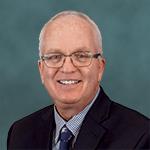Course Description:
This course contains four video modules. You’ll earn four (4) hours of continuing education credit upon completion.
Science of Sedation
Dentists who administer oral sedation are charged with doing so safely. To ensure this, dentists should be versed in pharmacology – the study of the body’s reaction to drugs. Understanding the full range of normal reactions to drugs lowers the risk of an adverse reaction, even in vulnerable patients.
Over three modules, Dr. Anthony Feck explains how common oral sedatives work inside the body. He traces the path of sedatives during administration, absorption, and excretion. He discusses common properties of drug classes, including benzodiazepines, antihistamines, and hypnotics. He also elaborates on the benefits of using nitrous oxide for sedation.
In addition, you’ll learn:
- How to distinguish between pharmacokinetics, pharmacodynamics, and pharmacotherapeutics
- The advantages of administering oral sedation
- The disadvantages of administering oral sedation
- How emotions affect the GI Tract
- Why oral sedatives are given to patients the night before a procedure
- Why confusion between a drug’s potency and efficacy exists
- How to understand a drug’s therapeutic range
- How to calculate a drug’s half-life
- The purpose of sedative-hypnotic drugs
- Why posthypnotic suggestions work
- Why benzodiazepines are ubiquitous in sedation dentistry
- How to avoid respiratory depression when administering triazolam
- Medical condition contraindications for using sedation drugs
- Drug and food contraindications for using sedation drugs
- Why ignorance is no longer acceptable for dentists tasked with analyzing drug interactions
Top Dose
Most patients respond predictably to sedation drugs. However, a small percentage of patients lie outside the traditional response curve. Dentists who administer sedatives incrementally should recognize the signs and symptoms of these outlier patients. They should also know how to stay within a drug’s margin of safety while keeping patients content.
In this module, Dr. Feck explains what T.O.P. dose is. He compares it with the more common, but less meaningful, maximum recommended dose (MRD). He provides the three unbreakable commandments of T.O.P. dose protocol.
In addition, you’ll learn:
- How to identify hyperresponsive and hyporesponsive patients
- Factors that contribute to hypoactivity
- Why drug manufacturers’ MRD isn’t always reliable
- How to calculate T.O.P. dose
- The two drugs used in T.O.P. dose protocol
… and more.
Reacquaint yourself with the effects and mode of action of sedation drugs.
Purchase of this course grants access for one year and requires an internet connection, computer with video and audio capabilities, and in some cases, Adobe Reader to view handouts and articles.
This course requires an active sedation permit or previous attendance at Adult Oral Sedation Dentistry, Light Sedation: N2O and Oral Sedatives, Pediatric Sedation Dentistry, Master Series – Advanced Sedation, IV Sedation Certification or IV Sedation Recertification.
To learn more about what Membership benefits are available to you, visit our Membership page.
*After 60 days, the Trial Membership will upgrade to a Standard Membership at $54.95/mo for a one-year commitment. Refer to terms of service for details. 2-month Trial Membership Offer is open to individuals who have not participated in the Trial Membership program within the past two (2) years.
Purchase of this course grants access for one year and requires an internet connection, computer with video and audio capabilities, and in some cases, Adobe Reader to view handouts and articles.
You can download this course and watch it anywhere using the DOCS APP. Get it on Google Play or the Apple Store.
Watch the video and complete the quiz to earn 4 CE credits.
Scientific support and additional resources are available here.
This course requires an active sedation permit or previous attendance at Adult Oral Sedation Dentistry, Light Sedation: N2O and Oral Sedatives, Master Series – Advanced Sedation, IV Sedation Certification or IV Sedation Recertification.

Learn how common oral sedatives work inside the body; trace the path of sedatives during administration, absorption, and excretion; common properties of drug classes, including benzodiazepines, antihistamines, and hypnotics; learn the benefits of using nitrous oxide for sedation.
(AGD Code - Definition - Hours)
010 (Basic Sciences) – 2 hours
340 (Anesthesia and Pain Management) – 2 hours
Total hours: 4 hours
Original release date: 4/15/2019
DOCS online courses are available to the purchaser for one year from date of purchase.
No refund of course tuition is available.

